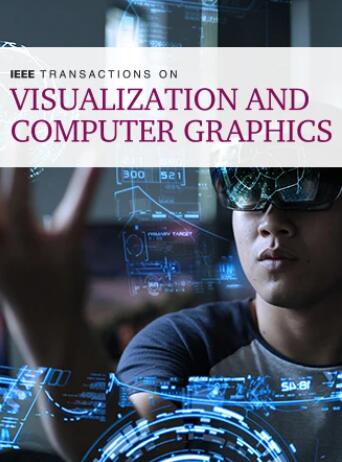路径跟踪在2D, 3D和物理网络
IF 6.5
1区 计算机科学
Q1 COMPUTER SCIENCE, SOFTWARE ENGINEERING
IEEE Transactions on Visualization and Computer Graphics
Pub Date : 2022-07-23
DOI:10.48550/arXiv.2207.11586
引用次数: 2
摘要
通常建议不要使用3D来可视化网络等抽象数据,但Ware和Mitchell 2008年的研究表明,网络中的路径跟踪在3D中比在2D中更不容易出错。然而,尚不清楚当使用边缘路由改进网络的2D呈现时,以及当用于探索网络的简单交互技术可用时,3D是否保留其优势。我们通过对新条件下路径跟踪的两项研究来解决这一问题。第一项研究是预先注册的,涉及34名用户,并比较了用户可以使用手持控制器在虚拟现实中旋转和移动的2D和3D布局。尽管在2D中使用了边缘布线和使用鼠标驱动的交互式高亮显示边缘,但3D中的错误率低于2D。第二项研究涉及12名用户,调查了数据物理化,比较了虚拟现实中的3D布局与微软HoloLens耳机增强网络的物理3D打印输出。错误率没有发现差异,但用户在身体条件下用手指执行了各种动作,这可以为新的交互技术提供信息。本文章由计算机程序翻译,如有差异,请以英文原文为准。
Path Tracing in 2D, 3D, and Physicalized Networks
It is common to advise against using 3D to visualize abstract data such as networks, however Ware and Mitchell's 2008 study showed that path tracing in a network is less error prone in 3D than in 2D. It is unclear, however, if 3D retains its advantage when the 2D presentation of a network is improved using edge-routing, and when simple interaction techniques for exploring the network are available. We address this with two studies of path tracing under new conditions. The first study was preregistered, involved 34 users, and compared 2D and 3D layouts that the user could rotate and move in virtual reality with a handheld controller. Error rates were lower in 3D than in 2D, despite the use of edge-routing in 2D and the use of mouse-driven interactive highlighting of edges. The second study involved 12 users and investigated data physicalization, comparing 3D layouts in virtual reality versus physical 3D printouts of networks augmented with a Microsoft HoloLens headset. No difference was found in error rate, but users performed a variety of actions with their fingers in the physical condition which can inform new interaction techniques.
求助全文
通过发布文献求助,成功后即可免费获取论文全文。
去求助
来源期刊

IEEE Transactions on Visualization and Computer Graphics
工程技术-计算机:软件工程
CiteScore
10.40
自引率
19.20%
发文量
946
审稿时长
4.5 months
期刊介绍:
TVCG is a scholarly, archival journal published monthly. Its Editorial Board strives to publish papers that present important research results and state-of-the-art seminal papers in computer graphics, visualization, and virtual reality. Specific topics include, but are not limited to: rendering technologies; geometric modeling and processing; shape analysis; graphics hardware; animation and simulation; perception, interaction and user interfaces; haptics; computational photography; high-dynamic range imaging and display; user studies and evaluation; biomedical visualization; volume visualization and graphics; visual analytics for machine learning; topology-based visualization; visual programming and software visualization; visualization in data science; virtual reality, augmented reality and mixed reality; advanced display technology, (e.g., 3D, immersive and multi-modal displays); applications of computer graphics and visualization.
 求助内容:
求助内容: 应助结果提醒方式:
应助结果提醒方式:


